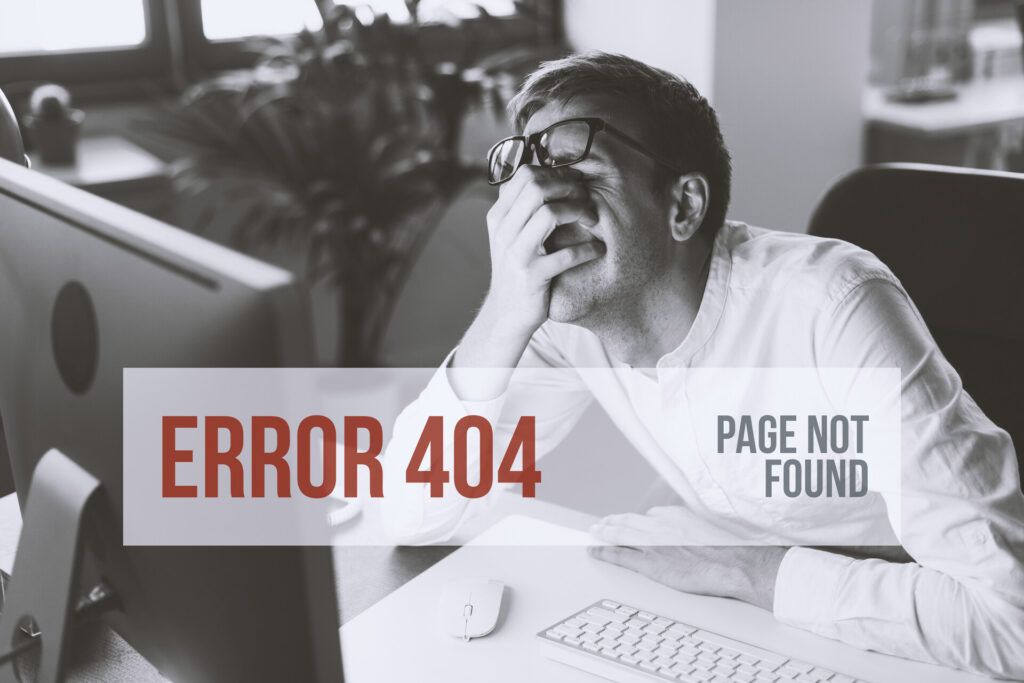Imagine trying to access a website or specific page only to be halted by an enigmatic message: 403 forbidden. For many, this prompt raises more questions than answers. What does 403 forbidden mean? Is it a system glitch, or perhaps something more deliberate? Dive into the intricacies of this common issue as we demystify its origins, implications, and, most importantly, the remedies to get you back on track.
A 403 forbidden code indicates that you have been denied access to a specific webpage or resource, typically due to insufficient permissions or configurations. Causes can range from file permission issues and faulty .htaccess rules to erroneous configurations. To fix it, verify a user’s permission, check .htaccess files, or consult your hosting provider to ensure proper settings.
Decoding Digital Lingo – Welcome to the World of Codes
In the vast realm of the internet, communication is crucial. When browsers interact with servers, they rely on HTTP status codes – a standardized set of three-digit numbers – to understand the state of their requests. These codes are akin to the internet’s body language, revealing whether web pages are accessible, if there’s an issue, or if the user needs to take further action.
Yet, much as businesses can lose clients due to miscommunication, misinterpretations, or service gaps, a mismanaged or misunderstood status code can deter a user, underscoring the importance of clear digital dialogue.
Among these, the 403 forbidden error stands out, often leaving users puzzled. And although you have a professional website development agency by your side, it’s always good to know some new stuff, especially if something can be quite serious for your pages. Let’s delve deeper into the enigma of this.

What Is a 403 Forbidden Error?
Navigating the intricate web, especially in an era where digital marketing holds paramount importance, we occasionally encounter barriers. One such barrier is this status code. At its core, the 403 forbidden meaning is straightforward yet vexing: you do not have the necessary permissions to view the requested page or resource.
Beyond its initial frustrations, there’s a deeper layer to consider: just as improving website speed can enhance user experience and digital reach, understanding this error’s intricacies can offer invaluable insights for swift resolutions and better virtual navigation.
Difference Between 403 Forbidden and Other Common HTTP Response Status Codes
In the grand orchestra of HTTP status codes, each number sequence strikes a unique note, signifying a specific message from servers to the user. Understanding these codes is pivotal for troubleshooting issues.
- 200 OK – This is the music to a user’s ears. It indicates that the request was successful, and the servers have returned the expected content.
- 404 Not Found – If the 403 is a “you can’t enter,” the 404 code is more of a “there’s nothing to enter into.” This status indicates that the server couldn’t find the requested page or resource.
- 500 Internal Server Error – This is the way servers say, “It’s not you; it’s me.” Unlike the 403, which is about permissions, the 500 error is a generic message showing that an unexpected condition was encountered and the is no more suitable specific message.
- 502 Bad Gateway – This one’s akin to a communication breakdown between servers. It means that one server received an invalid response from another server it was accessing while attempting to load the pages or fulfill another request by the browser.
Distinguishing between these status codes can be crucial. While they all indicate different types of issues, comprehending each one’s unique message can lead to quicker troubleshooting and more efficient web browsing.

Why Does the 403 Forbidden Error Occur – What Causes It?
A robust online presence, sculpted by seasoned strategies from a professional SEO agency, can make or break a brand. Yet, even the most meticulously crafted campaigns, knowing the importance of digital marketing and following its rules, can hit unforeseen roadblocks.
As many digital marketers and webmasters will attest, understanding the root causes of such errors is essential. So, why does this error occur, and what stands behind its unwelcome appearance? Let’s check out.
Incorrect File or Directory Permissions
Each file and directory on a web server has associated permission that dictates who can read, write, and execute them. These are crucial for security. For example, missing index files is one of the most common reasons for triggering this code.
Misconfigured .htaccess Rules
The .htaccess file is a powerful configuration tool used on Apache servers. It allows webmasters to set configurations for directories and their subsequent files. If rules within this file are set incorrectly – like wrong rewrite rules or improper deny/allow directives – it can easily lead to this coded message.
IP Blocking or Geo-Blocking
Sometimes, websites block access for users from public IP addresses or geographic regions. This can be due to security concerns, regulatory compliance, or regional content rights. When someone from a blocked IP or region attempts to access, they’re greeted with this code.
Faulty Plugins or Modules for CMS Users Like WordPress
Content Management Systems (CMS) like WordPress, Joomla, and Drupal heavily rely on plugins or modules to add functionality. Sometimes, these plugins can conflict with each other or with core CMS files.
CDN Configurations
A Content Delivery Network (CDN) is designed to distribute web content across multiple servers, ensuring faster access for users around the globe. However, if a CDN is not configured correctly – like incorrect caching rules or misconfigured accesses – it can inadvertently block access to content.
Can This Stop Code Hurt Your Online Visibility and Ranking?
In the high-stakes world of digital presence, disruptions like ‘stop codes’ or errors can ripple out, impacting a brand’s online visibility and search ranking. This error hinders user experience, causing potential bounce-backs to search results. It can also block search engine bots from crawling and indexing your site, leading to reduced organic traffic.
Consistent errors, including 403s, can tarnish your website’s reputation with search engines, affecting key page metrics like bounce rate and user engagement.
Ensure Your Content Is Not Compromised
The heart of any robust online strategy lies in its content. Content is not just king – it’s the entire kingdom. It establishes authority, fosters trust, and engages audiences. When content is compromised by errors or stop codes, its value diminishes in the eyes of these search engines.
To curate impactful content, one must invest time in research for a blog post, understand audience needs, and deliver insights that resonate. Leveraging professional SEO marketing services and partnering with a skilled content writing agency can significantly boost a brand’s digital footprint.

How to Troubleshoot and Fix the 403 Forbidden Errors
In an age where digital impressions often precede physical interactions, ensuring a glitch-free online presence is imperative. Imagine a potential client, referred by a well-crafted campaign from a top-tier social media management agency, landing on your site only to be greeted by this dreaded stop code.
It’s not just a technical hiccup; it’s a missed opportunity. Efficiently troubleshooting this issue not only ensures smoother user experiences but also harnesses the full benefits of SEO. Higher accessibility and decreased bounce rates can lead to better search engine rankings. However, for businesses not well-versed in the technicalities, the question emerges: How to fix forbidden 403?
Try Reloading the Page
Misconfigured websites are not uncommon occurrences. Often, such missteps render the site unreachable for a temporary period. After addressing the underlying problem, normal accesses are typically restored. It’s advisable to start with this approach when addressing this stop code, given its simplicity and speed.
Clear the Browser Cache
Occasionally, this issue can appear due to old cached files or cookies stored in your browser. This outdated data can hinder your browser from displaying the webpage correctly. To address this, consider clearing your browser’s cache and cookies, then refresh the page.
Check the Site URL and Directory Permissions
Even familiar websites aren’t immune to the occasional typographical mishap. Ensuring you’ve entered the correct URL that ends with .com, .html, .org, .php, or with an extension. It’s also wise to ensure you’re targeting a specific webpage and not a directory. While at it, also look for any misconfigured rules or directives in the .htaccess file, especially those related to access controls.
Examine IP Blocks
Ensure you or your users aren’t accidentally blocked by IP. This might require checking the configurations of servers or firewall settings.
Disable Plugins/Modules One by One and Deactivate CDN Configurations
Deactivating plugins or modules one by one can help identify if one of them is the culprit. And if you’re using a Content Delivery Network, ensure that it’s not misconfigured, causing this stop code.
Contacting Hosting Providers
If you’re still stumped, reaching out to your hosting provider can offer more specific insights, as they might have imposed certain restrictions or have visibility on broader server issues.
Here the Prevention Is Better Than Cure Truly Works
In the dynamic world of digital marketing, anticipating challenges is key. The saying, “Prevention is better than cure,” rings true here. By partnering with the best SEO agency and understanding emerging marketing trends, businesses can proactively strategize.
However, it’s essential to remember that SEO results often require patience, underscoring the importance of a proactive approach in this ever-evolving domain. Luckily, you can do some simple steps in order to actually prevent this kind of message on your website.
Regularly Monitor the Web Page Health
Regular monitoring of your website detects potential issues such as slow load times, broken links, or security risks, ensuring optimal performance and a smooth user experience.
With the ever-changing digital landscape, it’s vital to keep plugins and your CMS updated. This not only provides the newest features but also bolsters security and overall performance.
Practice Regular Backups
In the event of unforeseen issues or cyberattacks, having a recent backup of your website can be a lifesaver. Regular backups safeguard your data, allowing for quick restoration and minimizing potential downtime or data loss.
Also, don’t forget that your choice of hosting provider directly influences your website’s performance and reliability. Opting for a reputable hosting provider, complemented by a robust Content Delivery Network (CDN), ensures faster load times, reduced latency, and enhanced security for your website visitors.

With Our Professional SEO Marketing Agency, Faulty Messages Will Be Ugly Past
In the digital realm, the right partnerships can transform challenges into growth opportunities. With Made Online, a professional SEO services agency at the helm, bolstered by adept content writing and a social media marketing agency, transient glitches can be swiftly addressed. The combined expertise ensures your online narrative is both engaging and optimized.
As we move forward with these expert collaborators, past issues become mere footnotes, making way for a more robust digital presence. Contact us and experience effortless digital navigation.

